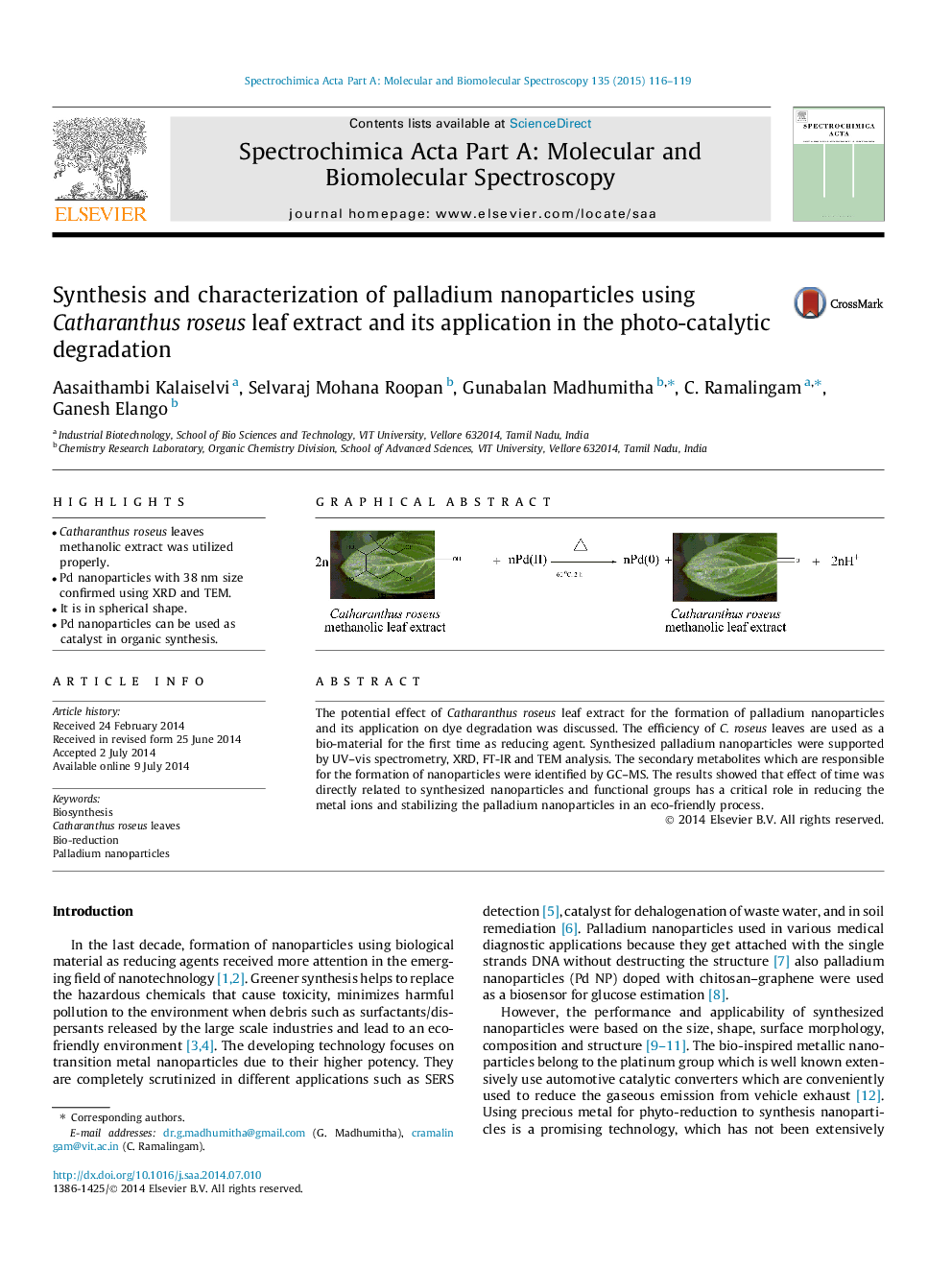| Article ID | Journal | Published Year | Pages | File Type |
|---|---|---|---|---|
| 1233171 | Spectrochimica Acta Part A: Molecular and Biomolecular Spectroscopy | 2015 | 4 Pages |
•Catharanthus roseus leaves methanolic extract was utilized properly.•Pd nanoparticles with 38 nm size confirmed using XRD and TEM.•It is in spherical shape.•Pd nanoparticles can be used as catalyst in organic synthesis.
The potential effect of Catharanthus roseus leaf extract for the formation of palladium nanoparticles and its application on dye degradation was discussed. The efficiency of C.roseus leaves are used as a bio-material for the first time as reducing agent. Synthesized palladium nanoparticles were supported by UV–vis spectrometry, XRD, FT-IR and TEM analysis. The secondary metabolites which are responsible for the formation of nanoparticles were identified by GC–MS. The results showed that effect of time was directly related to synthesized nanoparticles and functional groups has a critical role in reducing the metal ions and stabilizing the palladium nanoparticles in an eco-friendly process.
Graphical abstractFigure optionsDownload full-size imageDownload as PowerPoint slide
